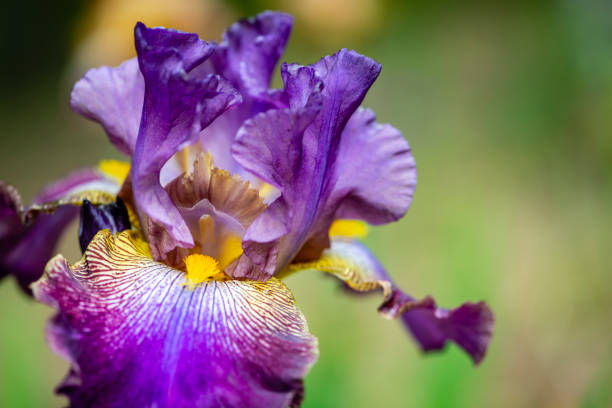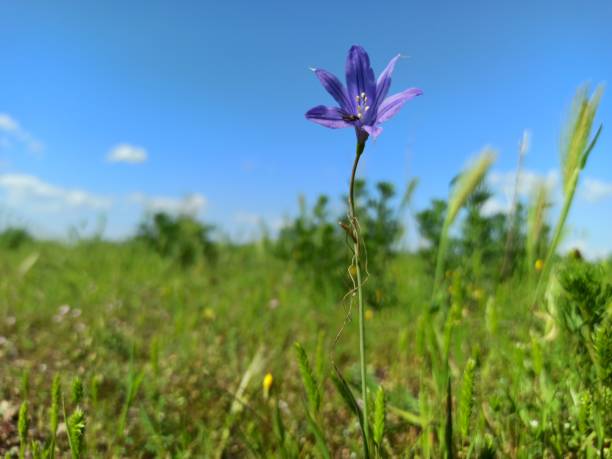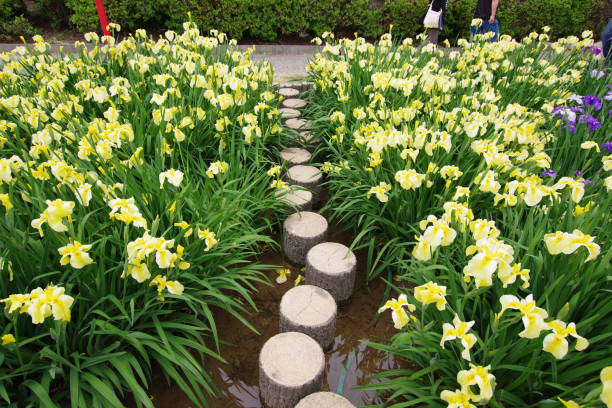Do Iris Like Acidic Soil?
Iris thrive in fertile and either neutral or slightly acidic soil with a pH range of 6.0 to 7.5. But they are quite tolerant of less-than-ideal soil conditions. When working with acidic soils, lime should be used, and sulfur should be used when working with alkaline soils. Before making any changes to your soil, it is important to conduct a soil test first.
Table of Contents
Soil Preparation

Bearded Irises
Iris prefers slightly acidic soil (pH 6.8) but will tolerate most soils. The preferred growing environment is fertile, well-drained soil with a neutral to slightly acidic pH range. The rhizomes should be exposed. Unless they’re exposed to light and air, they’ll die. You can improve drainage by adding humus, compost, or other organic material if you have heavy soil. Most clay soils can benefit from the addition of gypsum, an excellent soil conditioner.
Beardless Irises
Most beardless irises prefer slightly acidic soils (pH 5.5-6.5) and are rich in infertility.

Siberian Irises
Siberian Iris likes acidic soil with a soil pH of 5.5 to 6.9. Putting your Siberian Iris down a little deeper than other Iris will cover the rhizomes with one or two inches of soil. Plants should be two feet apart. You should do so in rich, fertile soil when you plant Siberian iris gardens. However, the Siberian iris can grow in poor or lean soil. Siberian iris plants should be fed with a nitrogen-rich fertilizer in the spring and again when the blooms have died down. Peat moss, compost, and humus are good for the soil because they make it better.

Japanese Irises
Japanese irises need soil with a pH between 5.0 and 6.5. Loose and rich soil with a lot of organic matter is what they like best. They will grow better if you add compost or old manure to their soil. They don’t like too acidic soil, and adding lime or bone meal to the soil will make them die. Japanese irises don’t like to grow near concrete because lime comes out of it and can harm them.
Basic Planting Tips
- A small mound of soil should be built up in the middle of the planting hole.
- Roots on either side of the mound should be spread out to form a rhizome mound.
- Tie down the roots with a firm layer of soil in step three. Rhizomes that have just been planted should be thoroughly hydrated.
- Irises, which are perennials, take time to mature. A new center leaf in the fan is the first sign of new growth in 2-3 weeks. It’s possible that the rhizome is not yet mature enough to produce blooms in the first year.
Feeding
The soil type in your area will help you determine how much fertilizer you need. It’s best to use superphosphate or a well-balanced fertilizer with an N-P-K ratio of five to one. Avoid anything with a lot of nitrogen because it makes the plants grow soft and easy to get sick. A small amount in early spring and again a month after the flowers have bloomed, appreciated by us. You should put fertilizer around rhizomes, not on them. They are very good when adding alfalfa pellets (without salt) to the soil around newly planted irises.
Spacing
The standard spacing for rhizomes is 12 to 24 inches apart. Clumps form more quickly and have more color with close planting, but this also necessitates dividing them every two to three years. Irises are being planted in threes in the photo below. When they are planted, the “toes” of each rhizome face inward toward one another, about 8 inches apart.
Cultivation
The plants are hardy and easy to cultivate. At the very least, irises need six to eight hours of direct sunlight per day. If you live in a hot climate, some afternoon shade may be helpful, but in general, irises thrive in full sun. Iris can thrive in the shade, but it is unlikely to flower. Drainage is essential for healthy iris growth. There must be adequate air movement in the building. Rhizomes should be planted at or just below the soil’s surface. It is important that the tops of the rhizomes can be seen, and the roots face downwards when planting irises. Tamp down the soil firmly and water thoroughly to keep the rhizomes in place. Planting Irises too deep is a common blunder.
Propagation
Split up congested clumps and replant healthy rhizomes in new soil when necessary. Plant iris rhizomes from July to September for the best results. Also, after three to five years, this is the best time to divide and replant iris that have become overcrowded because plants are normally dormant in the heat of July and August. Newly planted irises need plenty of time to establish their roots before the growing season ends. Before your first hard freeze or killing frost, plant irises.
